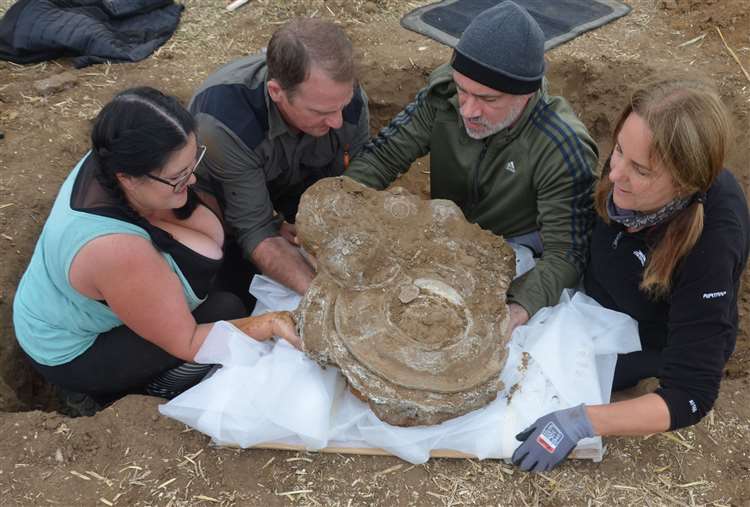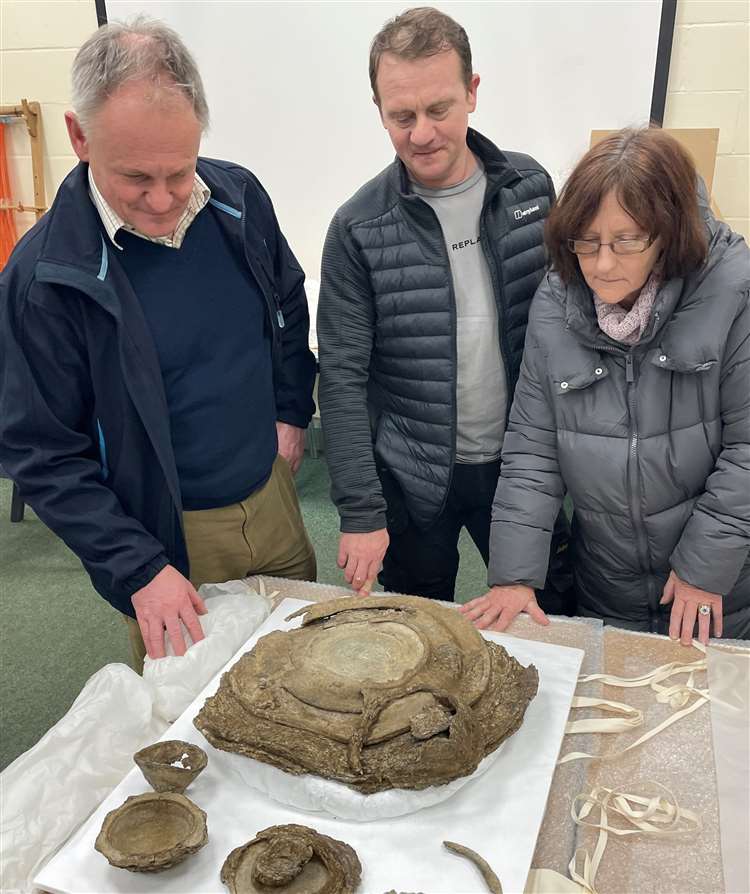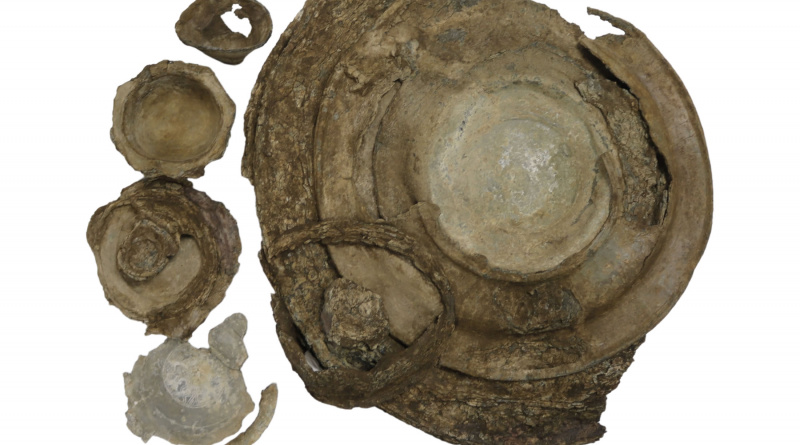Roman hoard goes on display in Suffolk
A rare discovery of late Roman pewter has just gone on display at the West Stow Anglo-Saxon village and Museum, near Bury St Edmunds, Suffolk. The hoard was discovered in Autumn 2022 by detectorist, Martin White.
The Find
Martin White found the collection of late Roman pewter plates, platters, bowls and a cup in Euston, Suffolk on 3 September 2022 during an East of England Rally.
Martin said “I’ve been detecting for about 10 years, and this is the most high profile find I’ve made so far, it was very exciting! We quickly consulted with the Archaeological Service so that the items could be removed and recorded, without being damaged. It was a privilege to be involved in the whole process, from discovery to excavation to seeing the finds go on display“
Extracting the hoard
The remains of the vessels were buried in a pit and carefully stacked.

As they were clearly a hoard group and in poor condition excavation was postponed until 20th September when conservators were available to help lift the whole group.
This was a team effort: Suffolk County Council Archaeological Service facilitated the excavation of the hoard. This was carried out by Wardell Armstrong and Norfolk Museum Service conservators, who subsequently did the conservation work.
All work was funded by the Euston Estate and East of England Rallies
Councillor Melanie Vigo di Gallidoro, Suffolk County Council’s Deputy Cabinet Member for Protected Landscapes and Archaeology, said: “It is amazing to think that this fragile hoard has survived thousands of years, and being discovered by Martin, that adds to the Suffolk story. This is a fantastic example of teamwork, with many organisations coming together to help preserve Suffolk’s history, all made possible by the generous support of the Euston Estate, East of England Rallies and, of course, Martin“
PAS Record.
The hoard was recorded at the PAS as SF-86DD2F. It contained 13 Roman pewter vessels including some larger plates and platters, which were used to allow food to be served communally. The octagonal bowls may have a Christian reference. The PAS record notes “Roman pewter vessels are commonly late 3rd or 4th century in date, and deposition in hoards, although often not independently datable, is mostly from the mid 4th century onwards. The hoards are found across the southern half of Britain“
On Display
The hoard will go on display at the West Stow Anglo-Saxon village and Museum until January 2024.

The Duke of Grafton from The Euston Estate, said:
“We were happy to donate this hoard and make it available for the public to see. Everyone can then share in the joy of this historic Suffolk find.”
Cllr Ian Shipp, Cabinet Member for Leisure and Culture at West Suffolk Council which runs West Stow Anglo-Saxon Village said:
“We are very grateful for the kind donation of this hoard to West Stow Anglo-Saxon village and Museum and thrilled to be able to put it on display for local people to see. It adds a new strand to the story of our past in this area in the later Roman period – at a time just before the settlement at West Stow was beginning.“

